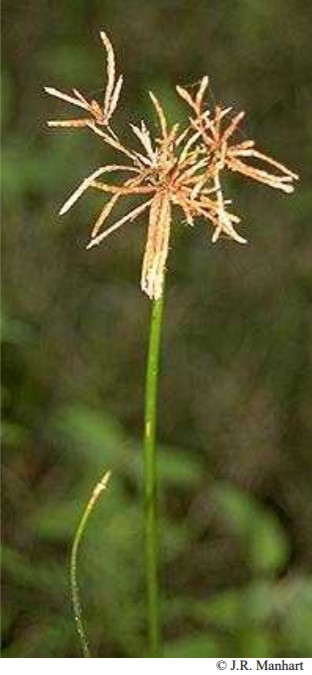Recent archaeological research has found that prehistoric people living in Central Sudan may have used medicinal plants. Specifically, evidence that the Purple Nut Sedge (Cyperus rotundus) was eaten and possibly used medicinally has been found by examining the dental calculus of the skeletons found in recent digs.
The purple nut sedge is now known as a weed and can be very difficult to eradicate in agricultural settings. However, Chinese medicine and Ayurveda recognize the plant as having medicinal properties.
According to a recent Futurity article:
The research was carried out at Al Khiday, a pre-historic site on the White Nile in Central Sudan. For at least 7,000 years, beginning before the development of agriculture and continuing after agricultural plants were also available, the people of Al Khiday ate the plant purple nut sedge. The plant is a good source of carbohydrates and has many useful medicinal and aromatic qualities.
 This research shows that these ancient people were well-versed in medicinal herbs and used them long before agriculture became prevalent.
This research shows that these ancient people were well-versed in medicinal herbs and used them long before agriculture became prevalent.
Medicinal Uses of Purple Nut Sedge:
Purple nut sedge is known to inhibit the growth of Streptococcus mutans which contributes to tooth decay. As a result, members of the ancient population were found to have unexpectedly low incidents of dental decay.
Purple nut sedge was used by the Egyptians medicinally and as a perfume.
This plant is known in Chinese medicine as a qi-regulating herb.
Ayurveda uses this herb for fevers, dysmenorrhea and digestive disorders.
Extracts from the purple nut sedge tubers are said to act as a muscle relaxant and may reduce nausea.
Other medical uses of purple nut sedge include reduction of pain and inflammation.
Warning:
This plant is also said to be “the world’s most expensive weed” due to the difficulties in eradicating it and the costs involved for agriculture. It is not recommended as an herb to cultivate.

Leave a Reply